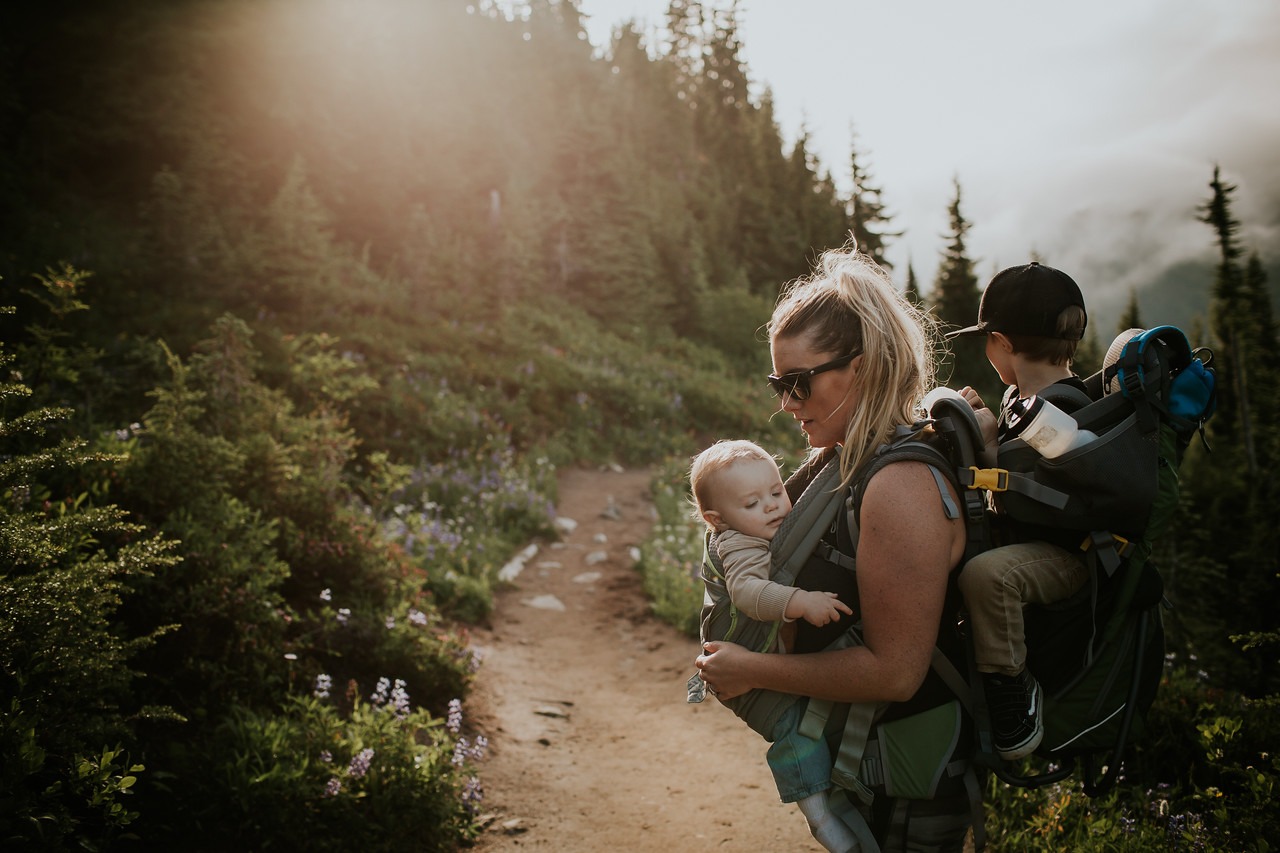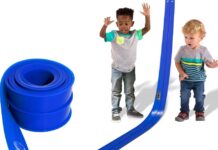More than 60% of new parents say they hesitate to explore nature after having a child. Concerns about safety, logistics, and comfort often get in the way. But hiking with your little one is not only possible—it can be incredibly rewarding.
Choosing the Right Gear for a Safe and Comfortable Experience
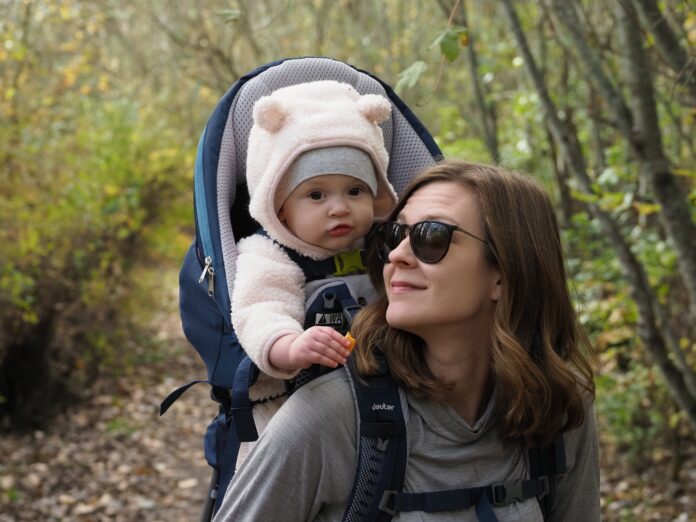
Well-designed baby carriers ensure that both parent and child stay comfortable during the trek. Look for models with padded straps, adjustable settings, and proper back support. Ventilated fabric helps prevent overheating, and a rain cover adds protection in unpredictable weather.
Other essential gear includes:
- Lightweight backpack for supplies – A small, ergonomic backpack prevents strain on your shoulders while ensuring all essentials remain within reach.
- Sun hat and UV-protective clothing – Shielding delicate skin from the sun’s harmful rays is crucial, especially during long hikes with little shade.
- Insulated water bottles – Hydration is key for both you and your child. Insulated bottles help keep water cool and refreshing throughout the day.
- Compact first-aid kit – Small injuries like scrapes or insect bites can happen, so carrying essentials like band-aids, antiseptic wipes, and tweezers is a smart move.
Selecting Trails That Suit Your Situation
Not all trails work for new parents. Steep inclines and rocky paths make things complicated. Start with shorter, well-maintained routes before trying anything too ambitious. Consider trails with:
- Minimal elevation gain – Steep hikes are challenging and put extra strain on your body, making them less ideal for carrying a child.
- Shaded paths to prevent overheating – Direct sun exposure can make a hike uncomfortable. Opt for routes with plenty of tree cover to keep you both cool.
- Nearby rest areas – Look for trails with benches or picnic spots where you can comfortably take a break and tend to your child’s needs.
National parks often have stroller-friendly trails, making things easier if carrying your child isn’t an option.
Dressing Smart for Changing Conditions
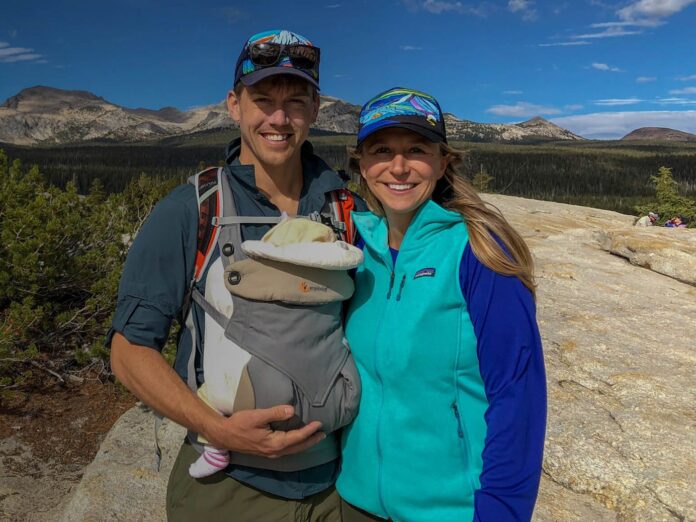
Layers are essential for unpredictable weather. A breathable base layer prevents sweating, while a fleece or windproof jacket adds warmth when needed. Opt for:
- Moisture-wicking fabric – Keeps sweat away from the skin, preventing chills and discomfort.
- Soft, non-restrictive clothing for your child – Ensures freedom of movement and prevents irritation from rough fabrics.
- Wool socks to prevent blisters – Keeps feet dry and comfortable, reducing friction and avoiding painful blisters.
In colder months, mittens and foot covers help with temperature control. Sun protection remains important year-round, so apply sunscreen generously before heading out.
Packing Smart: Only Bring What You Need
Overpacking leads to discomfort. Stick to the essentials:
- Diapers and wipes – Carry only what you need for the duration of the hike. A sealable bag helps store used items until you find proper disposal.
- Snacks and formula – Nutritious, easy-to-carry snacks like sliced fruit, granola bars, and crackers provide energy while keeping your child satisfied.
- Extra clothing – A backup outfit prevents discomfort in case of spills, unexpected rain, or temperature changes.
- Light blanket – Serves multiple purposes, including shade, warmth, and a comfortable surface for breaks.
- Bug spray – Choose baby-safe insect repellent to protect against bites without causing skin irritation.
Keeping supplies in easy-to-access compartments avoids unnecessary digging through your bag when you need something quickly.
Managing Meal Times and Breaks During the Hike
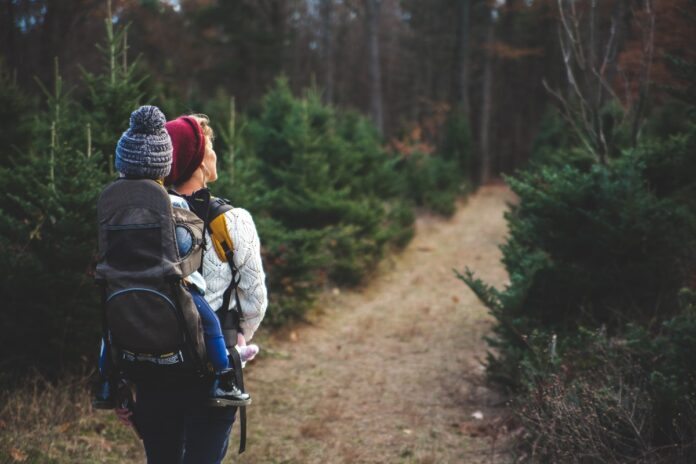
Snacking on the go keeps energy levels stable. Soft fruits, crackers, and easy-to-handle snacks work well. If bottle-feeding, an insulated container helps maintain the right temperature. Plan for:
- Breaks every 30-45 minutes – Frequent stops prevent exhaustion and provide opportunities for feeding, diaper changes, or stretching.
- Feeding stops in shaded areas – Avoid direct sun exposure when stopping for a meal, ensuring a comfortable feeding experience.
- Hydration for both parent and child – Drink water regularly to stay refreshed and prevent dehydration during the trek.
Pacing is key. Take cues from your little one to decide when to stop.
Safety Precautions to Keep in Mind
Preparation prevents problems. Before heading out, consider:
- Checking weather conditions – Sudden changes can turn an easy hike into a risky situation. Monitor forecasts before setting off.
- Notifying someone about your route – Always inform a friend or family member about your planned path and expected return time for safety.
- Avoiding trails with extreme terrain – Stick to paths with stable footing to reduce the risk of slips and falls.
- Watching for wildlife or insects – Be aware of potential encounters with animals or biting insects that could pose a threat.
Carry a compact first-aid kit with bandages, antiseptic wipes, and a small thermometer. In case of an emergency, knowing the nearest exit point helps avoid unnecessary panic.
Balancing Adventure and Flexibility
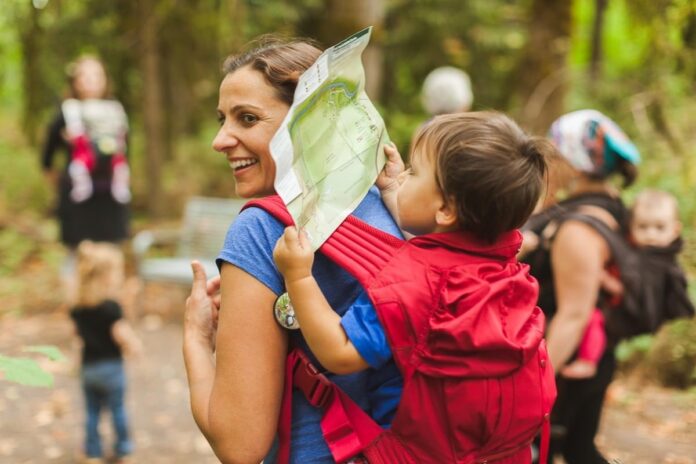
Rigidity leads to stress. The goal isn’t covering miles but enjoying nature together. A flexible mindset ensures:
- Adaptability to changes in mood or weather – Be prepared to turn back if necessary or switch plans based on conditions.
- Adjustments to planned routes if needed – If the trail seems too difficult or conditions worsen, pick an easier alternative.
- Enjoyment of small moments, like resting near a quiet stream – Take time to appreciate the journey instead of focusing solely on the destination.
The adventure doesn’t have to be long to be meaningful.
Making the Experience Enjoyable for Everyone
A successful hike means both parent and child feel happy by the end. Focus on:
- Bringing small distractions like a soft toy – Helps keep your child entertained and comfortable.
- Talking or singing to provide comfort – A familiar voice calms anxiety and makes the journey more enjoyable.
- Keeping an eye on facial expressions for signs of discomfort – Watch for fussiness or restlessness as indicators of hunger, fatigue, or discomfort.
An enjoyable first experience increases the chances of more adventures in the future.
Final Thoughts
Exploring nature with a little one strengthens bonds and builds confidence as a parent. The key is preparation, patience, and a flexible attitude. Start small, choose the right gear, and embrace the journey, not just the destination.

